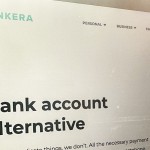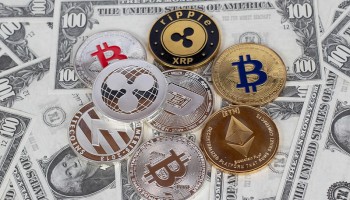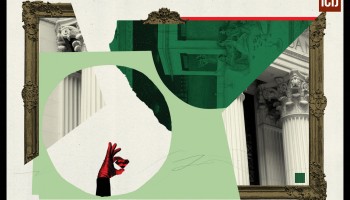With the global art trade’s value standing at US$50 billion a little over a year ago, high-value art is being increasingly seen as an investment opportunity for those with excess capital to allocate, be it in the form of pre-civilization relics, paintings, or other historical artifacts.
From the substantial number of such transactions, however, emerges an opportunity for criminals and the corrupt to launder their illicit earnings through the legitimate sales and purchases of art.
The astronomically high dollar figures in single transactions, the ease in transporting the artwork in question, and the industry’s long-standing culture of conserving the privacy of its sales make the art world an attractive avenue for money laundering and criminal activity worldwide, according to the Treasury Department.
The privacy at one’s disposal in the art world is a troubling sign for ensuring transparency in the industry, according to the Treasury report.
This lack of oversight makes it difficult to trace an artwork’s ownership or its history of transactions, thereby allowing the piece to become something of an invisible asset.
Moreover, in all transactions overseen by auction houses and galleries, it is standard practice for the seller and buyer to be listed as private and not have their identities disclosed to intermediaries.
The report also notes that shell companies can add an additional layer of anonymity for potential criminal activity; they can be used to facilitate the transfer of funds in lieu of the actual buyer’s name, thereby further concealing them from potential law enforcement investigations.
In most cases, high-value art is a particularly mobile commodity. This lends its owners a certain ease in transporting it internationally and away from those who might recognize its true value.
By and large, border agents, for example, would be considered ill-equipped to give an accurate appraisal to a work of art; through no fault of their own, they simply lack the expertise and knowledge of the industry’s rich history.
This allows criminals to smuggle their priceless goods across borders and away from authorities who might try to legally seize it from them.
In 2005, for example, Edemar Cid Ferreira, a Brazilian banker and art collector, was convicted of bank fraud shortly after his financial institution declared bankruptcy.
As part of the case, the courts ordered the seizure of Ferreira's $20 to $30 million art collection. Brazilian authorities, however, declared that several high-value pieces from the collection were found missing.
It wasn’t until 2007 when a U.S. investigation discovered one of the pieces — appraised at roughly $8 million — had been illegally imported from a Dutch storage facility, with an invoice documenting the work’s value at $100.
As art holds no true practical worth since it exists to be admired, its ultimate value is subjective. This, unfortunately, allows criminals and money launderers to manipulate its declared value for their own benefit.
An example would be using straw bids in an auction to raise the item’s selling price, or to over-inflate its value before donating it to charity so as to defraud the government with a larger tax deduction.
Furthermore, the highly-subjective nature of a work’s true value can allow criminal actors to purchase an item with their ill-gotten gains and hold it for several years so as not to draw suspicion before finally selling it for a tidy profit.
While a slow method of layering in the money laundering process, it is nonetheless noted by the U.S. Treasury as effective.
It also allows criminals to always have the funds that they are trying to launder within arm’s reach, since they can just as easily keep track of a work of art tucked away in a storage container as they can millions of dollars concealed in an offshore bank account.
Lastly, the report notes that technology is adding another layer of difficulty for authorities in their effort to counter money laundering schemes.
Non-fungible tokens (NFTs), for example, are digital tokens that offer its holder exclusive ownership of the media file within, be it an image, video, or other form of digital property.
The same code used to classify an image as an NFT could equally be applied to a high-value piece of digital art, with blockchains used to track the file’s history of ownership.
This form of media, according to the U.S. Treasury, can be used to conduct self-laundering, whereby criminals purchase NFTs from themselves with illicit funds in order to create an additional record of sale on the file’s blockchain.
From there, the funds can be insulated from the criminal after the NFT is ultimately sold to an unwitting third party, whose clean money is not tied to any prior crime.
The market for NFTs has blown up in recent months; U.S. authorities estimate that in early 2021, NFTs traded for $1.5 billion in profits and its market grew by 2,627 % over the previous quarter.






